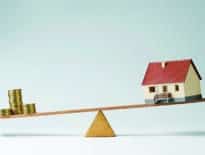
Two key metrics will help you determine how to price a client’s home even as the market is disrupted by COVID-19: inventory and price per square foot.
As states begin lifting stay-at-home orders, how will prices from the pre-COVID-19 market compare to those post-COVID-19 market? More importantly, how can you determine exactly how much prices are changing in your local market?
Supply and demand drives price. Pre-COVID-19, we were facing a serious housing shortage. What no one knows is whether the economic damage of the shutdowns that were necessary to preserve public health will drive the post-COVID-19 market into a full-blown downturn.
In the three months since the virus’ wave broke on America’s shores, we’ve seen increased unemployment and business losses, a decline in the availability of jumbo financing and home equity loans as lenders tighten credit standards, a shrinking pool of foreign buyers thanks to travel restrictions and fears investors liquidating properties due to non-payment of rents coupled with “do not evict” orders.
My personal prediction is the entry–level market will continue to be strong. However, limited financing in the non-conforming loan/luxury sector will result in price declines in that market segment.
What Data to Watch
To quickly assess potential changes in your specific market, you need two sets of data: the months of inventory on the market and a price-per-square foot analysis based upon pre-COVID-19 prices and post-COVID-19 prices.
Regardless of market shifts, months of inventory is still the best predictor of future price shifts. The reason? Price changes lag six to 12 months behind inventory changes.
To illustrate this point, in 2006 both the inventory and prices were increasing simultaneously. As the inventory continued to grow in late 2006 and early 2007, agents began to complain about the bad market. Even so, serious price declines didn’t appear in most areas until 2008.
![]()
Tim Warren: Market Conditions Offers Reasons for Optimism
Agents Face New Challenges in the Virus’ Wake
Colleen Barry and Dino Confalone: What Will Happen to Luxury Condos?
Kurt Thompson: What Realtors Need to Know About What’s Changed
Anthony Lamacchia: Data Offers Proof This Isn’t 2008
Consequently, to tell how prices will shift in various parts of your market six to 12 months from now, track the months of inventory on the market. If the number is five or less, you’re in a seller’s market. If that number hits six to seven months, your market is transitioning. Eight months or more is a buyer’s market where price decreases are likely.
Most MLS vendors provide price per square foot listing data. To see how the market is trending pre-COVID-19 vs. post-COVID-19, first determine pre-COVID-19 prices based upon the date your area went under quarantine or lockdown – either March 10, when Gov. Charlie Baker declared a state of emergency in Massachusetts or March 24 when he issued his stay-at-home advisory. Do your calculation as if you were creating a CMA based upon closed sales from Dec. 11 or 25, 2019 to March 10 or 24, 2020.
Next, search your MLS for the specific subdivision, location, price and square footage you want to predict. Remember to follow the “10 Percent Rule” – all properties selected must be within 10 percent of the improvements and the lot size. For a 2,000 square foot house on a 5,000 square foot lot, you would select properties with improvements of 1,800 to 2,200 square feet and lot sizes from 4,500 to 5,500 square feet.
Once you have that list, calculate the average price per foot for the properties that went under contract or closed prior to March 11 or 25, depending on the date you’re using. Repeat the process for properties that went under contract after that date and compare the two numbers.
Assume you find that local properties were selling for $200 per square foot pre-COVID-19 and $190 per square foot post-COVID-19. This tells you that your pre-COVID-19 comparable sales will be 5 percent higher than current values. By the same token, if the prices post-COVID-19 had increased 5 percent from $200 to $210 per square foot, you would know pre-COVID-19 comparable sales were too low by 5 percent.
How to Discuss Changing Prices with Clients
Because we will have very few closed post-COVID-19 sales to work with initially, focus primarily upon the months of inventory. Here’s what to say if months of inventory are climbing:
“Dear Seller, prior to COVID-19, we only had three months of inventory on the market. Today, that number has increased to six months of inventory. What this means is that pricing curve has flattened and the seller’s market with peak prices is history. If the inventory continues to grow, price declines are on the horizon. Consequently, it’s extremely important that you price your property right at or slightly below the comparable sales. This is the best way to maximize your price and avoid chasing the market down as prices start to decline.”
Here’s how to explain the size of any price decline:
“Dear Seller, the average pre-COVID-19 price per square foot in your area was $200 per square foot while the average post-COVID-19 has dropped to $190 per square foot. In other words, prior to COVID-19 your 2,500 square foot house would have been valued at $500,000. It’s current value today is $475,000. If this trend continues, prices may decline even further. To obtain the maximum price right now, it’s important to price your home at today’s market value.”
If they resist, continue by explaining:

Bernice Ross
“Your property values have already fallen by $25,000, but there’s another important factor to consider. Your mortgage payment, taxes, and insurance are about $4,000 per month. To calculate your true holding costs, you must add the amount your home declined plus your monthly carrying costs for each month you continue to hold the property.”
No one knows for sure how prices will change post-COVID-19. To accurately measure how your market is shifting, track the months of inventory and whether price per square foot prices are increasing or decreasing post-COVID-19.
Bernice Ross is a nationally syndicated columnist, author, trainer and speaker on real estate topics. She can be reached at mailto:bernice@realestatecoach.com.





